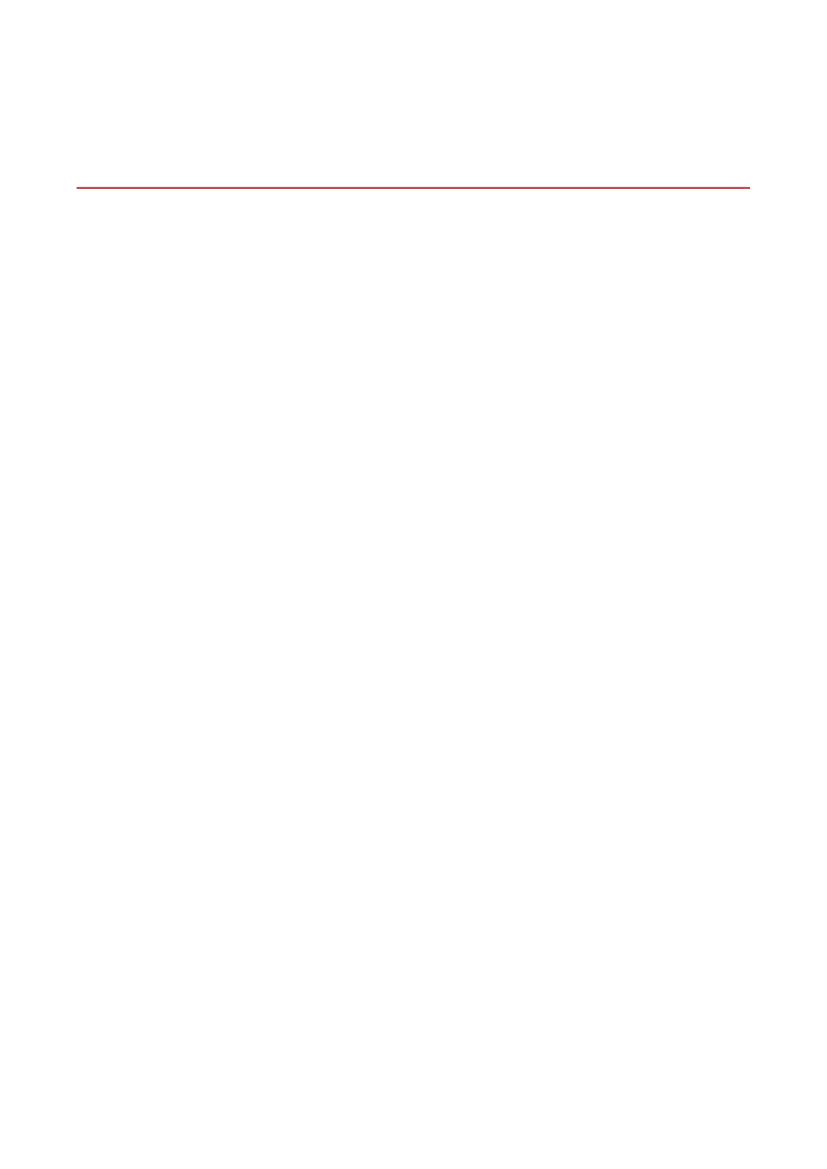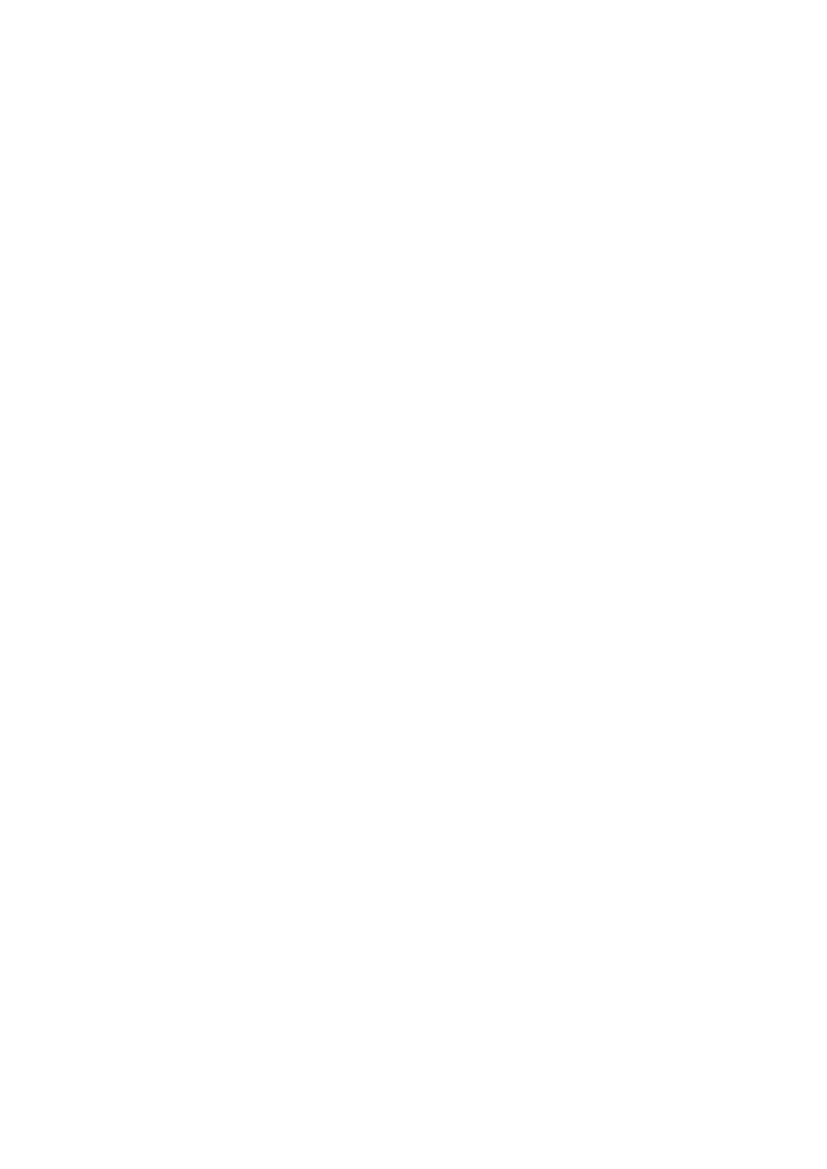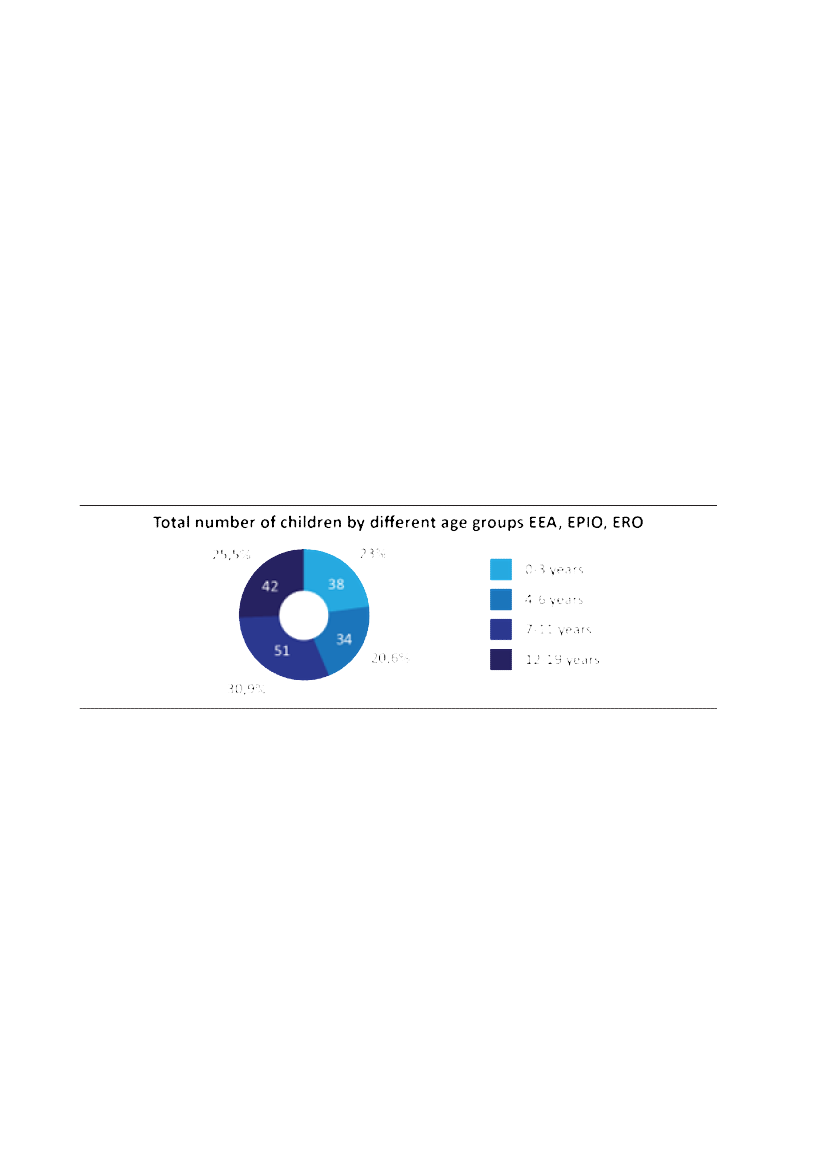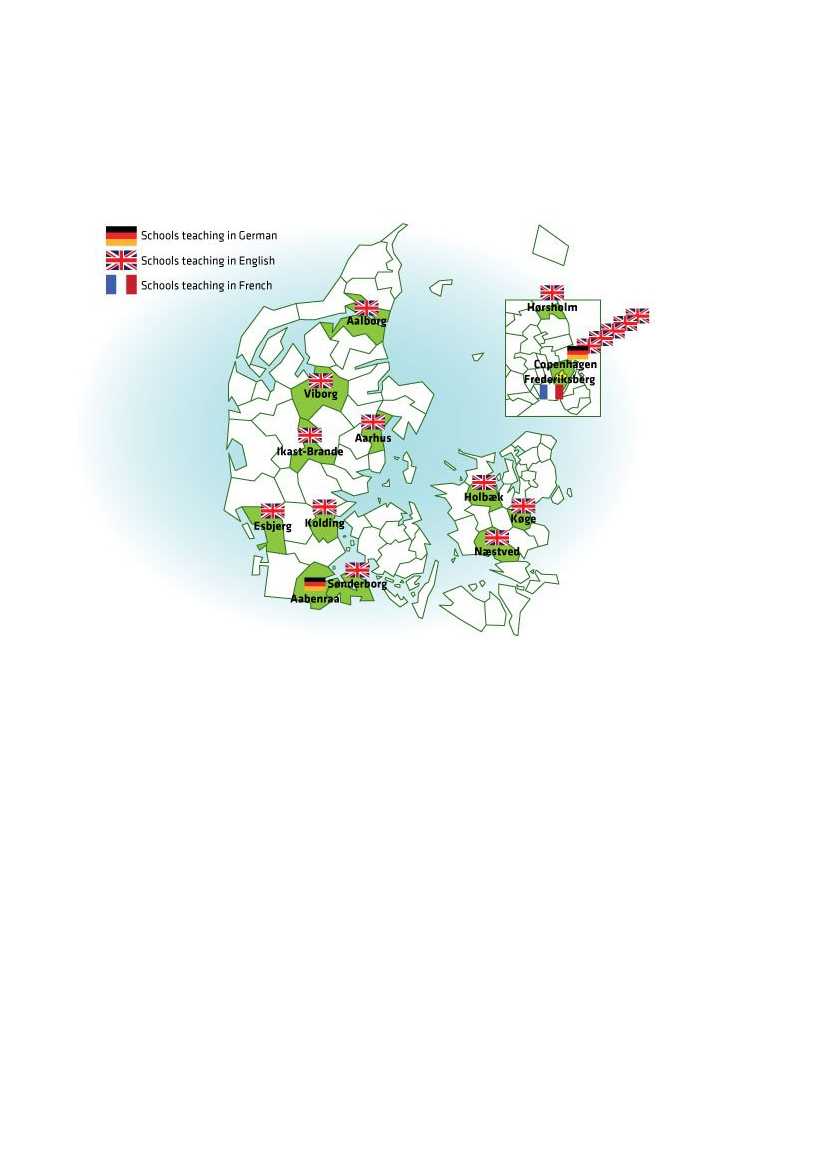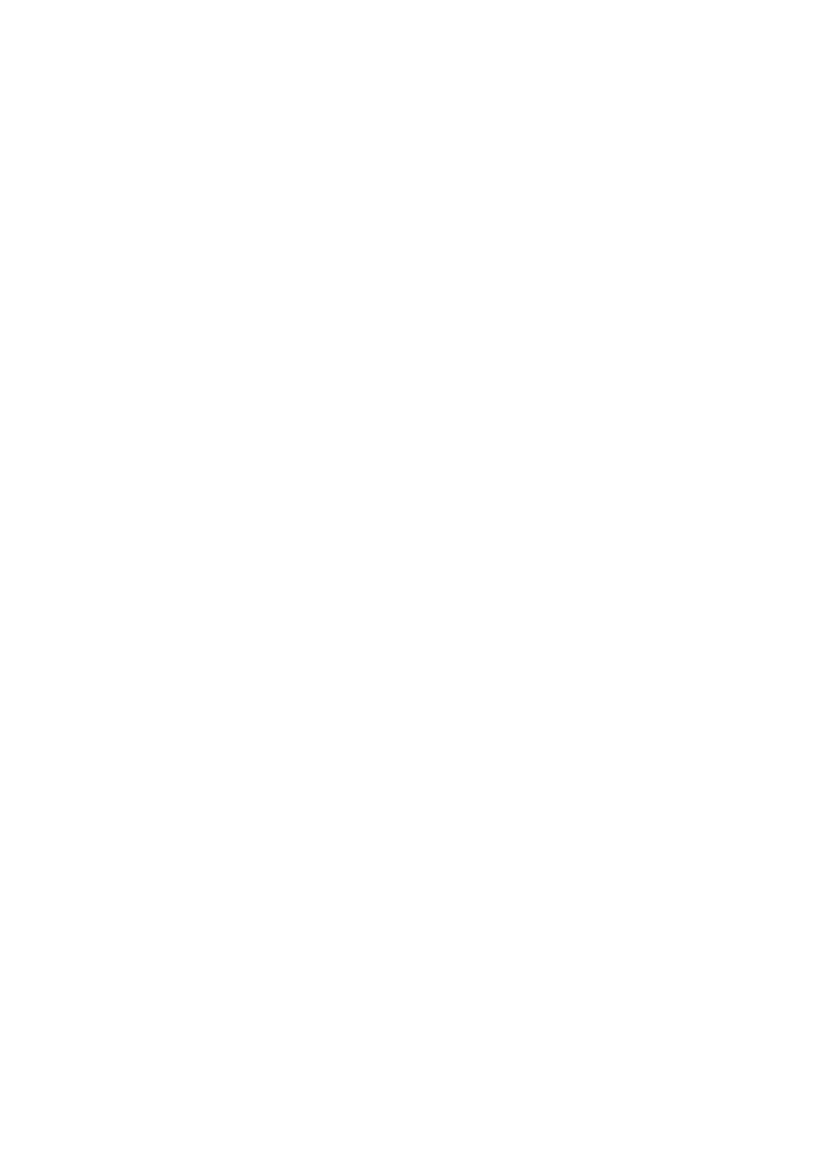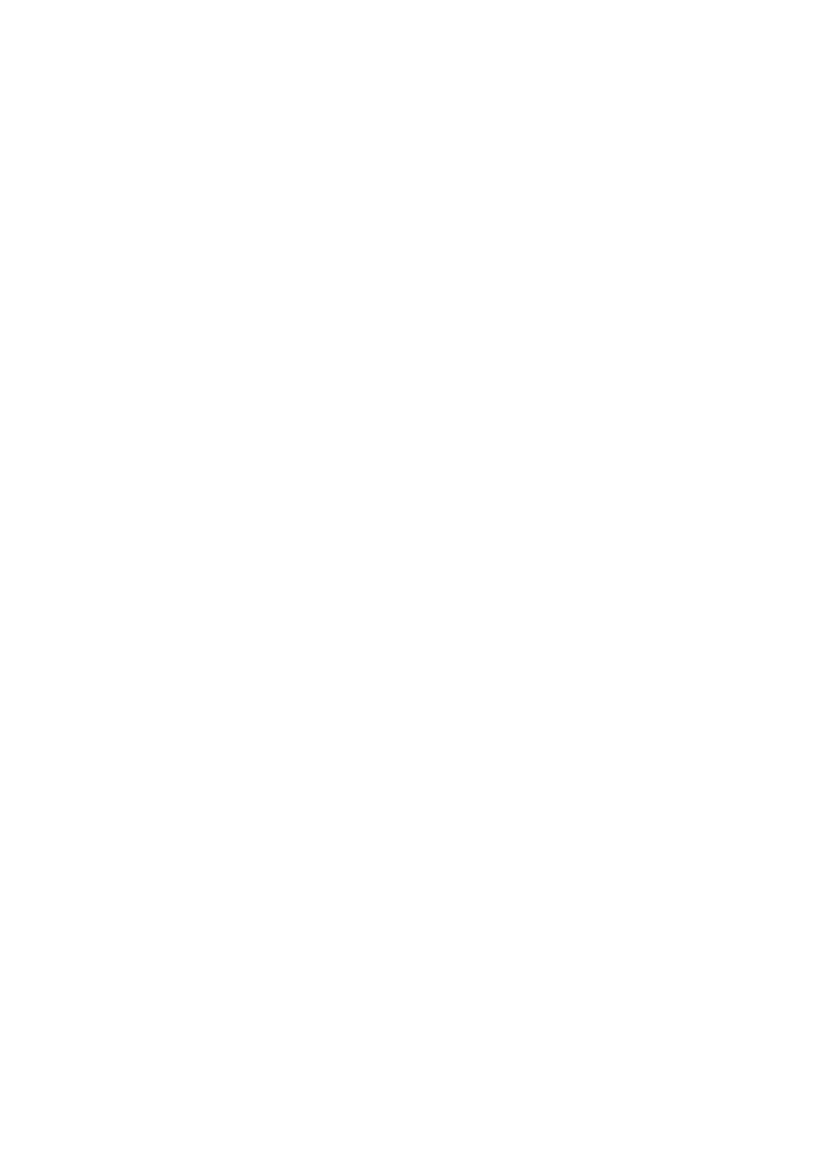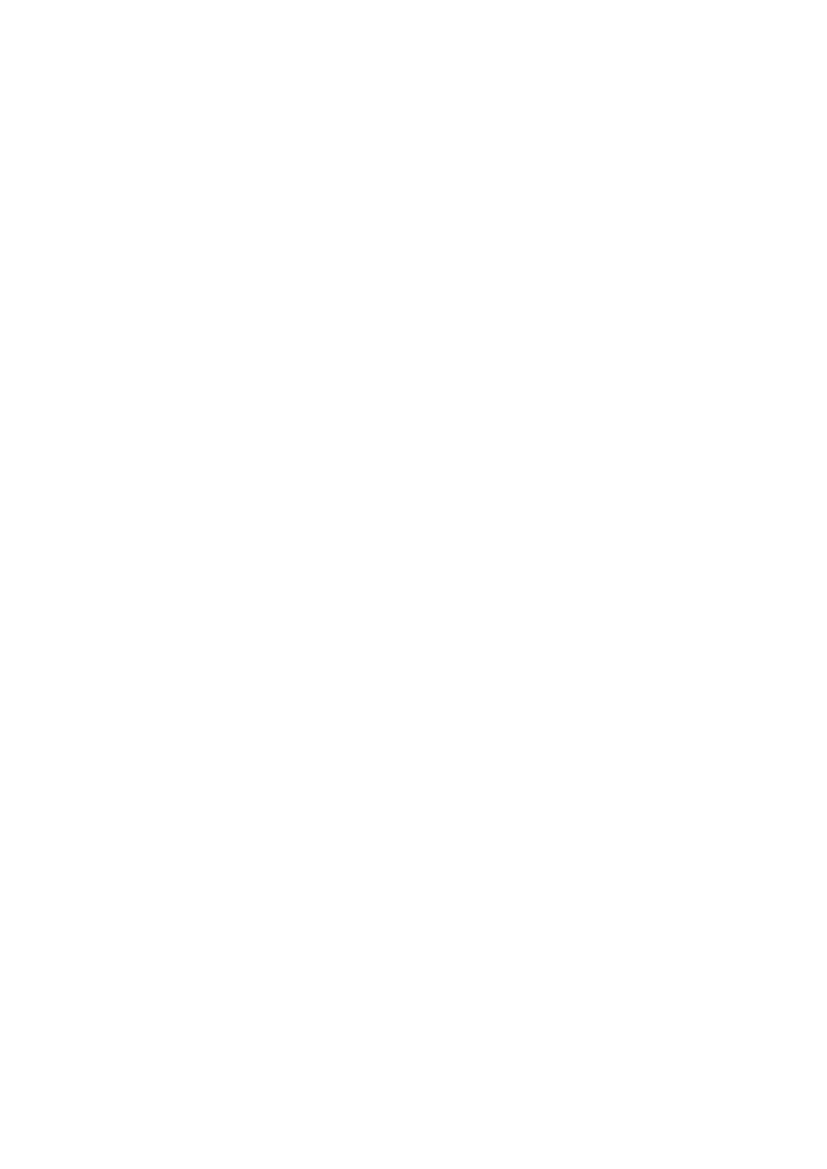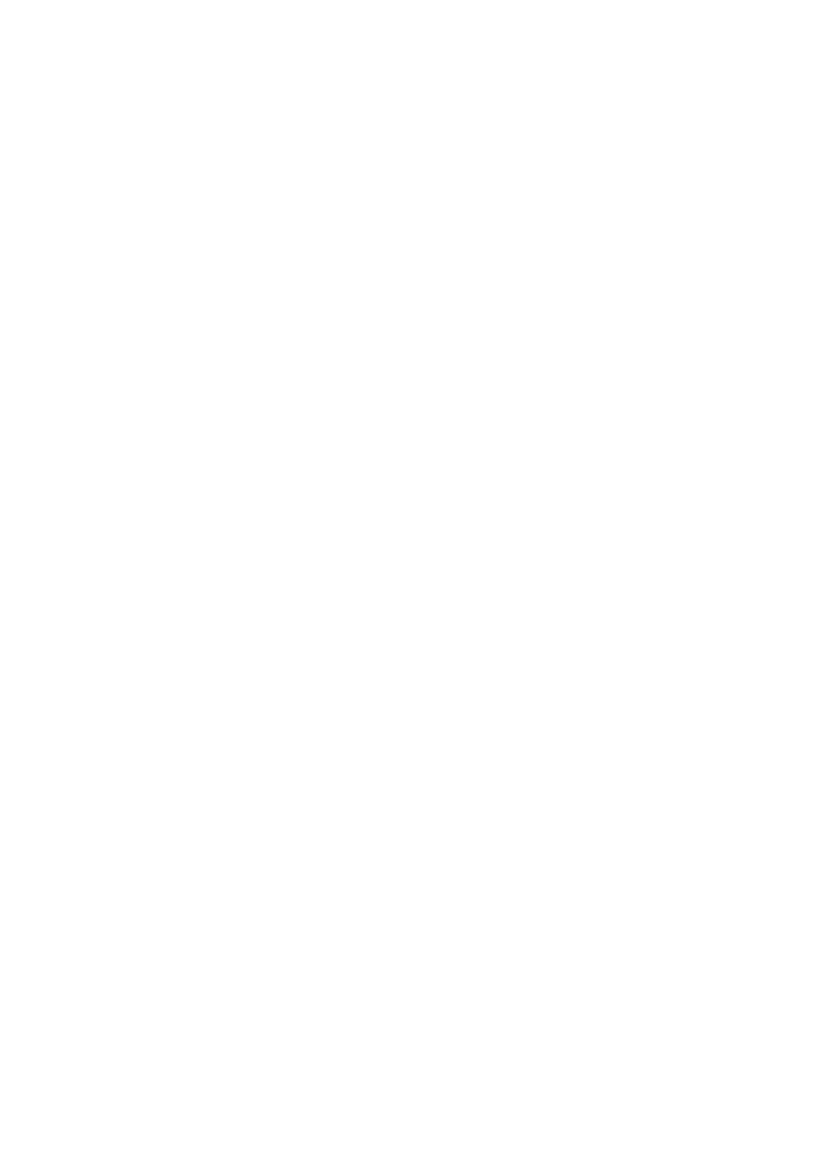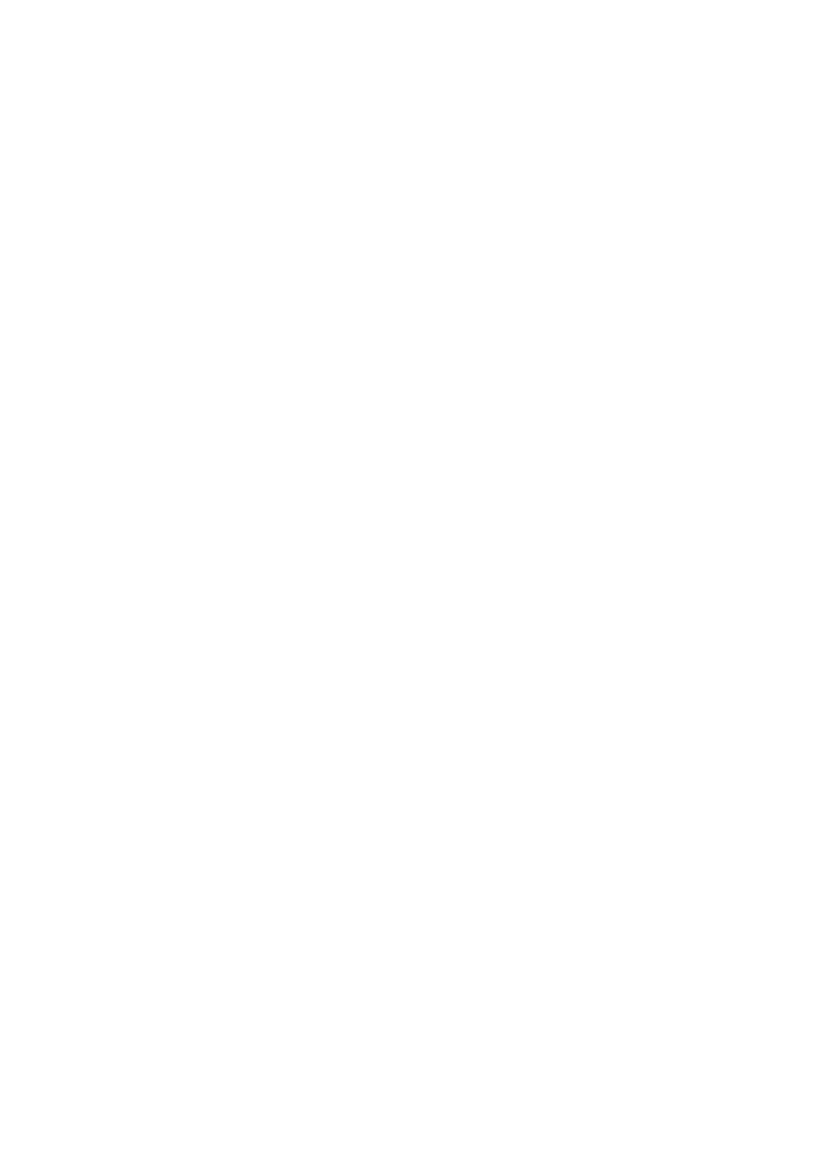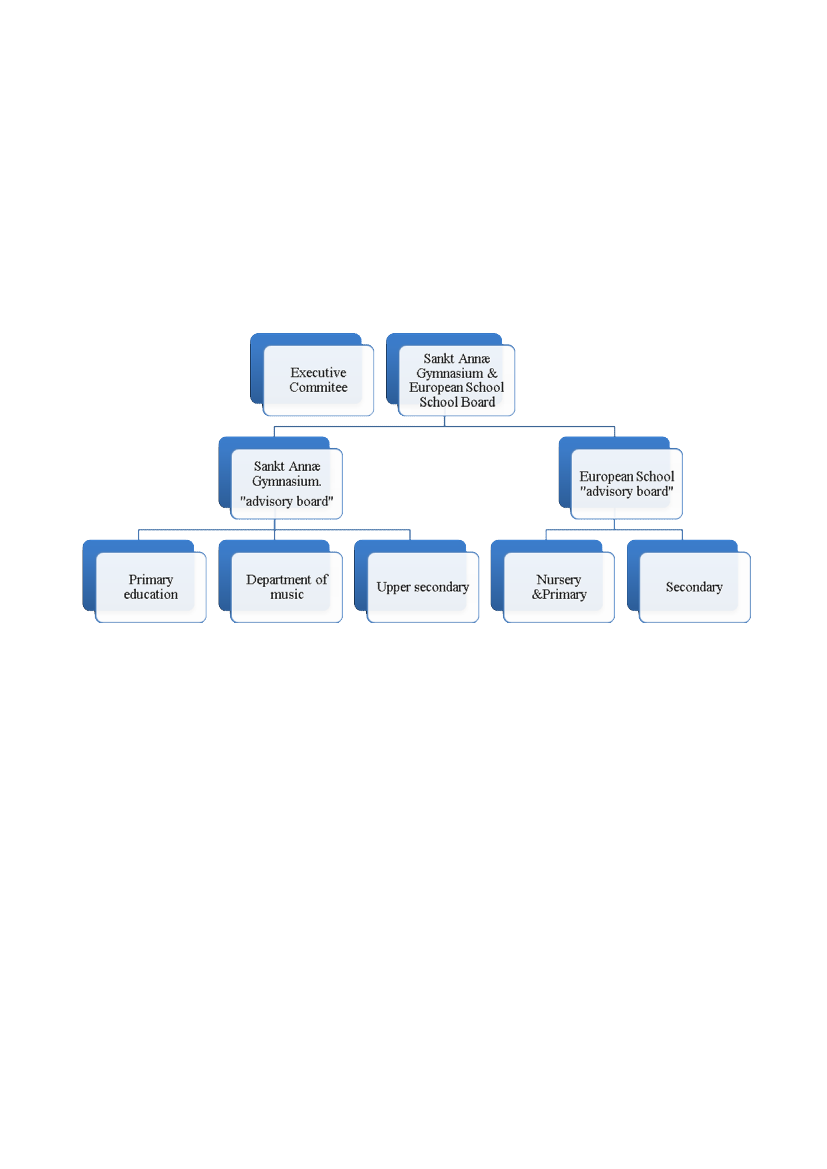Børne- og Undervisningsudvalget 2012-13
L 170
Offentligt
Sagsnr.: 086.69K.351
FILE OF INTEREST COPENHAGEN 2012
Sagsnr.: 086.69K.351
1. IntroductionThe regulation establishing the European Environment Agency (EEA), the European Environment Informationand Observation Network (EIONOT) was adopted by the European Union in 1990 (Council Regulation, ECC,no. 1210/90 of 7 May 1990) and came into force in late 1993 immediately after the decision was taken to locatethe EEA in Copenhagen. The agency commenced its official operation in 1994 and has now 32 member coun-tries. Furthermore, there are two small European institutions in Copenhagen: The European Parliament Infor-mation Office (EPIO) and the European Representation Office in Denmark (ERO).The EEA’s location in Copenhagen has elicited a need for a European School in Copenhagen, as the children ofEEA employees are of European backgrounds. Additionally, the rising influx of expatriates to Denmark adds tothe increasing need for international school places. A telephone survey performed in 2009 by the Municipality ofCopenhagen revealed that international schools were short of 2000 school places for the children of foreignemployees. Furthermore, a study conducted by Oxford Research revealed that 37 percent of the expatriates li-ving in Denmark were considering moving due to the lack of international schools, making it difficult for inter-national institutions, non-governmental organisations and companies to recruit foreign personnel with childrenready for school. Thus, the urgent need for greater capacity in international schools is considered a serious pro-blem in relation to attracting and retaining highly skilled labour. In order to prevent deterioration of Denmark’scompetitiveness, close attention is being paid to meet the needs and demands of the international community inCopenhagen.In coordination with the EEA, the Danish Ministry of Children and Education and the City of Copenhagen havetaken the initial steps to apply for an accredited European School type II, offering a complete educational cyclethat comprises nursery, primary and secondary education, resulting in the European Baccalaureate.The European school will be collocated with the existing Danish school Sankt Annæ Gymnasium, which has asimilarly high academic standard and international orientation as the European school. The collocation of thetwo schools will render beneficial settings such as creating greater interaction between the Danish and internati-onal students, thereby fostering synergy and a broader cultural understanding among the students, and further-more provide a smoother arrangement for the European School to be established in Copenhagen in terms oflocality and regulation.2. RationaleIn order to alleviate capacity constraints, the Danish Parliament passed a new law in April 2010, allowing privateinternational schools to open new subsidiaries located farther than walking distance from existing facilities. Eventhough such initiatives have created better framework conditions, the need for international schools in Denmark
Sagsnr.: 086.69K.351has not yet reached equilibrium. The rising demand for accredited international school places keeps outpacingthe supply, which lessen the attractiveness for highly skilled workers with families seeking to Denmark. Addingto this, Danish companies are facing major challenges attributed to an aging workforce, and difficulties in attrac-ting and retaining highly skilled labour in comparison to other OECD countries.Number of pupilsIncreasing demand for education that meets a curriculum of international standards has peaked with the risingemployment at the EEA. The EEA estimates that its recruitment of personnel from different parts of Europewould be considerably easier, if it could provide an accredited European school and thereby make it easier forstudents to transfer to and from national school systems in other EU member states. The agency has growntremendously over the last five years, from 65 to 200 employees with approximately 148 children under the ageof 18 years. In November 2011, the total number of children rose to 165 when including the children of em-ployees working at EPIO and ERO. There are 38 children in the age group 0-3 years; 34 in the age group 4-6years; 51 in the age group 7-11 years and 42 in the age group 12-19 years.
On the basis of the data made available by the European organisations, the Danish and English speakingchildren will stand out in number. There is an almost equal distribution of children with German and French astheir mother tongue, which highlights the issue of making a decision that benefits and accommodates the furtherdevelopment of a European School type II. As part of the ongoing dialogue with the European organisations,further investigation is to be conducted internally in order to justify the choice of either French or German. Ho-wever, the organisations have already announced that the choice of the third language section (French or Ger-man) should also find its justification in the total student number and the overall demand in one of the givenlanguage sections. The preferred third language choice of the European organisations will be announced inspring 2012 with the proviso that the implementation of the third language may start 2013 or postponed to alater date. A more perceptive implementation plan of the third language section will be made available in theDossier of Conformity.
Sagsnr.: 086.69K.351
International Schools in Denmark
Denmark supports private schools with a relatively substantial government subsidy. In large part, internationalschools in Denmark are private and charge tuition fees, while some of the schools that offer the InternationalBaccalaureate Diploma Programme are run by the state and are free of charge. Private tuition fees in Denmarkrange from 2.400 Euro to 17.000 Euro per year. At present, there are 22 schools offering international primaryeducation and 15 offering the international upper secondary education. There are only one school (CopenhagenInternational School) in the Greater Copenhagen Area that are fully accredited to offer a full scale IB program-me, covering the Primary Years, Middle Years and the IB Diploma Programme.International schools in Copenhagen such as the French and German offer their own national programmes. Inaddition, there are several international schools, which offer an English curriculum equivalent to the ones in theUS and the UK. Eleven of the international schools are located in and around the larger metropolitan area ofCopenhagen and the remaining are located in Jutland. Within the metropolitan area of Copenhagen, there arecurrently 3323 pupils enrolled in private international schools.
Sagsnr.: 086.69K.351The City of Copenhagen and the Øresund RegionThe international magazine Monocle has ranked Copenhagen as the best city to live in due to its quality of life,transport infrastructure and the population’s respect for the environment. Copenhagen is a lively and open capi-tal city with an active internalisation policy, focusing on creating the best framework conditions for the city’sinternational citizens and visitors. The city is located on the Western part of the Öresund Region, the water pas-sage between Denmark and Sweden that connects the North Sea with the Baltic Sea. The opening of the ÖresundBridge in 2000 has diminished the importance of the national borders and promoted economic growth.The Öresund Region has approximately 3.7 million inhabitants and it is expected that within the next 18 years,the region will receive another 300.000 new inhabitants and out of the total number, roughly 100.000 are expec-ted to reside in Copenhagen. The Öresund Region has a profound concentration of leading research centres,with core competencies within medicine, biochemistry, biotech, information technology, environmental techno-logy, food control and telecommunications. Moreover it is one of Europe’s leading university regions, as it has12 universities with more than 150.000 students and 12.000 scientists, facilitating a dynamic transnational phase,transferring knowledge and employment opportunities between the Nordic regions. The Öresund Region addsvalue through innovative environment and high scientific output, and it is an important hub for economic activi-ty and is well suited to compete in the global market within research, industry and innovation. With the ÖresundRegion’s growth and development, the demand for international school places is expected to rise simultaneously,as the number of newcomers with international backgrounds will increase.Over time the number of international institutions and companies has grown significantly and the number ofexpatriates in Denmark has grown accordingly. Copenhagen hosts 197 international institutions, embassies andsix UN offices. The number of work and residence permits has increased significantly since the beginning of2004. In July 2010 the National Labour Market Authority registered 34.161 foreign workers in the metropolitanarea of Copenhagen. Although foreign owned companies only represent 1 percent of the private companies inDenmark, almost one in five of all private employees work in a foreign owned company. Moreover, 65 of theworld’s largest companies have set up regional headquarters in the Nordic countries, and 26 out of the 65 areplaced in the Öresund Region, where the number of regional headquarters has doubled in the last couple ofyears. Further, a new agreement between the Danish and Swedish governments paves the way for the ÖresundRegion hosting a new European research facility known as the European Spallation Source (ESS) located 30 min.from central Copenhagen. The agency will be the first major pan-European centre for material research and lifescience employing 400 researchers. A final agreement on the status of ESS is still to be negotiated. As a result ofcontinued internationalisation tendencies, further growth is anticipated in the total number of international com-panies and institutions in Copenhagen.
Sagsnr.: 086.69K.3513. The SchoolThe legal contextThe Danish educational law does not cover the educational system of the European Schools type II, and theMinistry of Children and Education will therefore propose an act, amending the current legislation to enable theestablishment and operation of a European School type II in Copenhagen.Sankt Annæ Gymnasium (The Copenhagen Choir School).The City of Copenhagen is planning to collocate the new European School type II with a well established publicschool,Sankt Annæ Gymnasium (SAG),also known as the Copenhagen Choir School. No previous experienceshave been made on the process of collocating a Danish public school with a European school. Crucially, a greatamount of attention will be paid to secure that the chosen solution appeases both school systems. The optimalresult should be the most beneficial outcome for the new school. Therefore, no definite decision on the colloca-tion will be taken until the City of Copenhagen is convinced that the physical integration of the two schools willbe successful, with the core aim of securing excellent education that gives recognition to and promotes the ex-pressions of these two main school traditions. The City of Copenhagen has formed a working group that willstart looking into this matter and their recommendations will be noted in the Dossier of Conformity.Sankt Annæ Gymnasium is known for choral singing of a high international standard, and has a long traditionfor developing strong international ties. It is one of the most recognised and prestigious public schools in Den-mark, providing education that spans from primary to upper secondary – leading to STX, the Danish examina-tion after grade 12 - equivalent to the European Baccalaureate. With a proud tradition for music and academicexcellence, SAG will render a beneficial setting for the European School type II in terms of a high academicstandard and a vibrant, creative and internationally orientated learning community. The merging of the EuropeanSchool type II with an existing school in Copenhagen will enhance the network and friendships between theinternational and the local community, and also reduce preliminary expenses. In order to enable the establish-ment of a European School in Copenhagen, a change or an addition in the legislative and institutional frameworkmay be required. The legislative and institutional framework grants the Sankt Annæ Gymnasium an exceptionalauthorisation and status compared to other public schools in Denmark. Hence the European school might createprecedent in the integration with Sankt Annæ Gymnasium. The proposed Act will be incorporated into the Da-nish educational law and regulations, which at the same time comply with the criteria of a European School andeducation. The Act is intended to come into force in December 2012.Educational visionThe aim of establishing a European School type II in Copenhagen is to offer a multilingual and multiculturaleducation with high syllabi standards to foreign employees’ children and the children of Danish employees, espe-cially the children of the EEA staff. Furthermore, the European School will increase the possibility for Danish
Sagsnr.: 086.69K.351children to enrol in the European educational system, hereby enhancing European and international competen-ces among the Danish future workforce.The European School will adhere to the fundamental principles of the European School syllabi, where studentswill meet high standards in all subjects. The instruction programme will be based on pedagogical methods thatcultivate respect and tolerance, emphasising the understanding of and coping with different cultures and back-grounds. Furthermore, the vision of the school is to prepare the students to consolidate their role as Europeancitizens in a democratic society - and within a larger global context.Though Sankt Annæ Gymnasium and the European School hold separate syllabi, they both share the reputationas educating highly skilled and qualified students for higher educations. Sankt Annæ Gymnasium’s core valuesencompass creativity, professional competence, equality and international orientation and these values have beenthe driving force for maintaining a high educational standard. The collocation will be beneficial in the respect ofconsolidating an equal atmosphere, where children of international backgrounds can feel appreciated and at ease.Education in the new school will adhere to the fundamental guiding principles of the European Schools:to give pupils confidence in their own cultural identity – the bedrock for their development as Europeancitizens;to provide a broad education of high quality, from nursery level to university-entrance;to develop high standards in the mother tongue and in foreign languages;to develop mathematical and scientific skills throughout the whole period of schooling;to encourage a European and global perspective overall and particularly in the study of the human sci-ences;to encourage creativity in music and the plastic arts and an appreciation of all that is best in a commonEuropean artistic heritage;to develop physical skills and instil in pupils an appreciation of the need for healthy living through parti-cipation in sporting and recreational activities;to offer pupils professional guidance on their choice of subjects and on career/university decisions in thelater years of the secondary school;to foster tolerance, co-operation, communication and concern for others throughout the school commu-nity and beyond;to cultivate pupils’ personal, social and academic development and,to prepare them for the next stage of education.
Sagsnr.: 086.69K.351School StructureIn response to the categorisation of different accredited school types in the European School system this applica-tion describes a type II European School with the cycles of nursery, primary and secondary education leading tothe European Baccalaureate Examination.Languages and SWALSIt is expected that a fully occupied European School constitutes approx. 900 students from nursery, primary toupper secondary school. The European School in Copenhagen guarantees that all category I students will receivemother tongue instruction. For category I children without a language section (SWALS- Students Without aLanguage Section), lessons in their mother tongue are guaranteed. This is attributed to the acknowledgement thatmother-tongue can serve as a solid foundation for learning other languages, acquiring academic qualificationsand furthermore as a building block for self-development. Students who do not fall under category I will receivemother-tongue teaching offered by the Municipality of Copenhagen, as the city already has an established systemof mother tongue teaching. The Municipality of Copenhagen has a wide range of mother-tongue teachingcomprising of 20-25 languages, offered to approximately 150 classes every year. Furthermore, Copenhagen hasan established cooperation with surrounding municipalities, which means that in cases of too few enrolments,the municipalities can create cross-municipal classes.The gradual expansion of the school will be accompanied by the parallel growth of pupils and staff. The newschool expects to have three language sections: Danish, English and French/German. The teaching will be con-ducted by native or near native speakers. In the matter concerning mother tongue lessons, all teachers will benative speakers of the language. The school will recruit and hire international school teachers both from abroadas well as locally. In order to guarantee a competent teaching staff and the level of linguistic competence andquality, appropriate arrangements will be made with relevant educational institutions to ensure the right compe-tence development of teachers.FundingThe European school will be funded by both the Municipality of Copenhagen and the government in accordancewith the current Danish public educational funding, where the Municipality of Copenhagen funds the operatio-nal costs for primary education and secondary, and the State funds upper secondary education.It is the objective that the preliminary expenses of the European School are financed as follow: a) subsidies fromEU for students of category I, b) subsidies from the Municipality of Copenhagen and surrounding municipalitiesfor students accepted, and c) subsidies from the State to upper secondary education. The City of Copenhagenprovides a building for the new school. In the first couple of years the school may reside in a temporarily vacantschool building.
Sagsnr.: 086.69K.3514. Admission and implementation planThe registration and enrolment process at the European School type II in Copenhagen will be developed in se-veral stages, beginning in August 2013. There will be an average of 25 students in each classroom, but the maxi-mum children accepted per class will be 28. The school will give priority admittance for the children of posthol-ders working for the EEA, EPIO and ERO in Copenhagen, also known as category I pupils. Despite the factthat a full school capacity will fall into place in 2017/2018, the considerable demand for international schoolplaces necessitates a provisional establishment of European school places, where the intention is to cover asmany educational cycles as possible depending on the construction capacity available. However, if the City ofCopenhagen succeeds to allocate more vacant school capacity before 2017/2018, a more ambitious implementa-tion plan will be initiated. The provisional establishment will be based on three rounds of admission. The firstround is the nursery cycle, which will commence in 2013 and only cover a one year period, complying with thenational law and regulation. The second admission commence in 2014, permitting new primary students to beenrolled and the second round commence in 2016, permitting new secondary students. The overlapping permis-sion for primary and secondary students designate two different periods of graduation. Students starting in 2013will graduate in June 2025 and the new secondary students, starting in 2016 will graduate in June 2022.Implementation Plan: Language sections - Danish, English and (French/German)August 2013: Nursery (one year Nursery)August 2014: Primary (P1)August 2015: Primary (P2)August 2016: Primary (P3), Secondary (S1)August 2017: Primary (P4), Secondary (S2)August 2018: Primary (P5), Secondary (S3)August 2019: Secondary (S1), (S4)August 2020: Secondary (S2), (S5)August 2021: Secondary (S3), (S6)August 2022: Secondary (S4), (S7)August 2023: Secondary (S5)August 2024: Secondary (S6)August 2025: Secondary (S7)
Sagsnr.: 086.69K.3515. GovernanceAs the European School will be integrated with the Sankt Annæ Gymnasium and funded by the host country, itwill comply with the laws and regulation of the host country in the issues concerning the set up and function ofthe school board. The two departments of the school will be placed under the same School Board, but still func-tion as two pedagogical autonomous entities. Each section of the school will have its own Deputy Director, whi-le the two schools will share an overall Director.
The overall School Board will consist of 17 members with the right to vote, and it is required that the memberspossess experiences and knowledge relevant for the schools’ educational and operational affairs. The memberswill consist of both professional representatives as well as parents of the students in order to ensure a democraticand diverse policy-making that advances the schools’ prospective performances as well as maintaining and deve-loping the schools’ unique profiles. The regular term of each member is four years, following the regular electionperiod of the municipality. It will be the role of the School Board to provide strategic guidance and to overseeeffectively all the aspects of the schools’ operations, including matters regarding supervision, finance, policiesand the monitoring of educational results – a task they hold together with the supervision authorities of the Eu-ropean Schools.In order to ensure equal governance practices and responsibilities under one School Board, two “advisoryboards” will be installed to supervise each school and supply support to the School Board. Sankt Annæ Gymna-sium will have one advisory board, supervising the school’s three main educational sections; primary education,choral department and upper secondary education and likewise for the European School’s advisory board, su-
Sagsnr.: 086.69K.351pervising the school’s three main educational sections; nursery, primary and secondary educations. The advisoryboards have no voting rights and will function as a reference unit to the School Board, assisting the Board inestablishing priorities, rules and policies.On behalf of the School Board an Executive Committee will be established to serve as an overseer of all plannedactivities both on operational and strategic level of Sankt Annæ Gymnasium and the European School. Themembers will be the two chairmen of the Advisory Boards (one from Sankt Annæ Gymnasium and one from theEuropean School), the Director of the school and the five Deputy Directors representing each educational sec-tion of the two schools.6. Quality and SupervisionIn Denmark, municipalities are responsible for the overall quality and supervision of compulsory education whilethe Ministry of Children and Education sets the legal framework for compulsory education. However, the Nati-onal Agency for Quality and Supervision has the mandate to monitor, evaluate and promote quality in the Da-nish school system in the case of mediocre educational performance. The Ministry of Education is responsiblefor the content of education in upper secondary education and for monitoring its quality (equivalent to S5-S7).In the context of a European School type II, the national inspectors for the European Schools will conduct themonitoring of the quality of teaching and learning in compliance with the European School regulations andwithin the framework of the accreditation procedure laid down by the Board of Governors. In tandem with therole of Board of Inspectors, the new school will also be answerable for the quality assurance, setting academicobjectives and educational goals in the manner determined by the Board of Governors.7. TimelineJanuary 2012April 2012Submission of the General File of Interest to the Board of Governors of the EuropeanSchoolsIf the Board of Governors accepts the File of Interest, Denmark will prepare the GeneralDossier of Conformity for nursery, primary and secondary education of the EuropeanSchool in CopenhagenJuly 2012October 2012December 2012August 2013August 2014Submission of the General Dossier of Conformity for the Nursery, the Primary cycleand secondary cycle (years S1 to S5 included)The Joint Teaching Committee examines the Dossier of Conformity and givesRecommendation to the Board of GovernorsThe Board of Governors examines the Dossier of Conformity and decides approval ornon approvalStart up of one year nursery, according to the implementation planStart up of P1
Sagsnr.: 086.69K.351August 2015January 2016February 2016April 2016Start up of P2Audit of the School. Cycles concerned by the audit: Nursery, Primary and Secondary (S1to S5)The Joint Board of Inspection examines the audit report and makes recommendationsto the Board of GovernorsThe Board of Governors examines the audit report and decides approval or non approval.If the BG approves the report, an accreditation and cooperation agreementcan be signed for Nursery, Primary and Secondary cycles (years S1 to S5 included)August 2016August 2017August 2018August 2019October 2019December 2019August 2020Start up of Primary (P3) and Secondary (S1)Start up of Primary (P4) and Secondary (S2)Start up of Primary (P5) and Secondary (S3)Secondary (S1) and start up of Secondary (S4): submission of the Dossier ofConformity for Secondary, years 6, 7 and Baccalaureate.The Joint Teaching Committee examines the Dossier of Conformity and gives arecommendation to the Board of GovernorsThe Board of Governors examines the Dossier of conformity and decides approval or nonapprovalSecondary (S2) and start up of Secondary (S5): Audit of the School: Secondary, years 6, 7and Baccalaureate (plus perhaps audit again on Nursery, Primary and Secondary S1-S5,referring to your advices of 15. December 2011?)October 2020December 2020The Joint Board of inspection examines the audit report and makes recommendationsto the Board of GovernorsThe Board of Governors examines the audit report and decides approval or non approval.If the Board of Governors approves the audit report, an Additional Agreement to theAccreditation and Cooperation agreement can be signed (for years S6-S7 and the Baccalau-reate). In the same time, the Accreditation and Cooperation agreement will be renewed inorder to align both Accreditation Agreements.August 2021August 2022June 2023August 2023August 2024August 2025June 2025Secondary (S3) and start up of Secondary (S6)Secondary (S4), and start up of Secondary (S7)First European Baccalaureate sessionSecondary (S5)Secondary (S6)Secondary (S7)Second European Baccalaureate session
